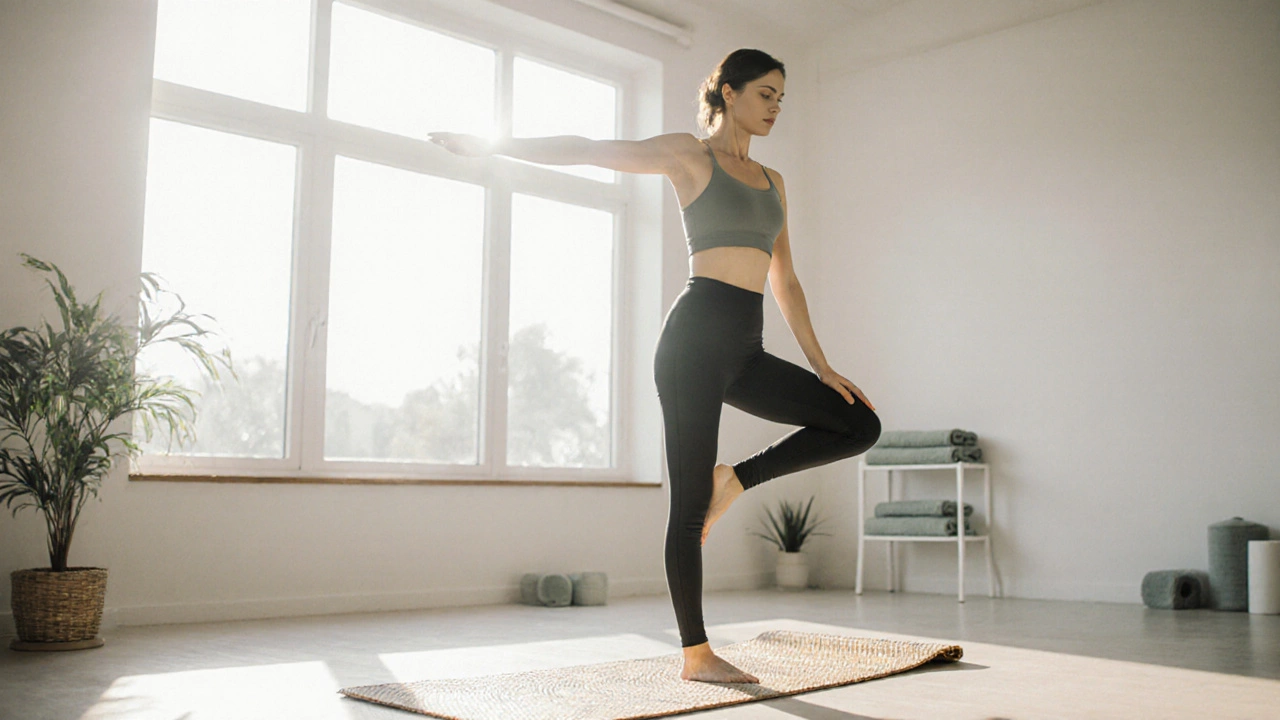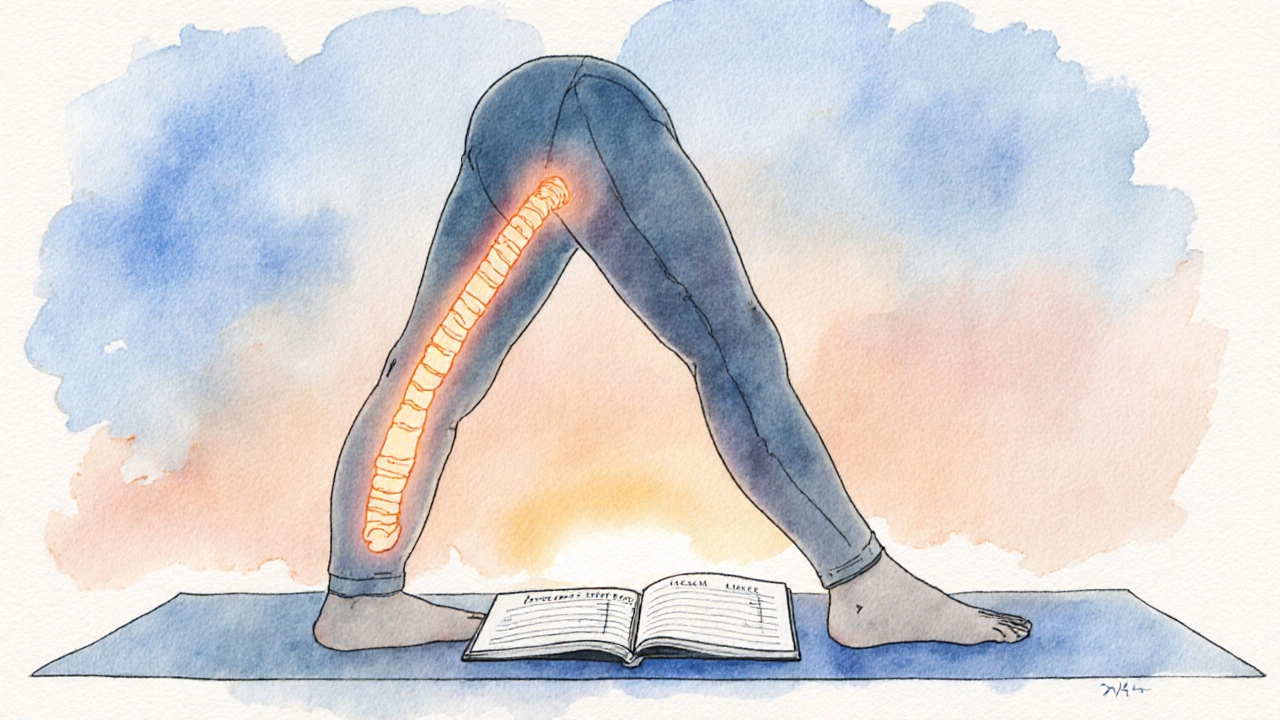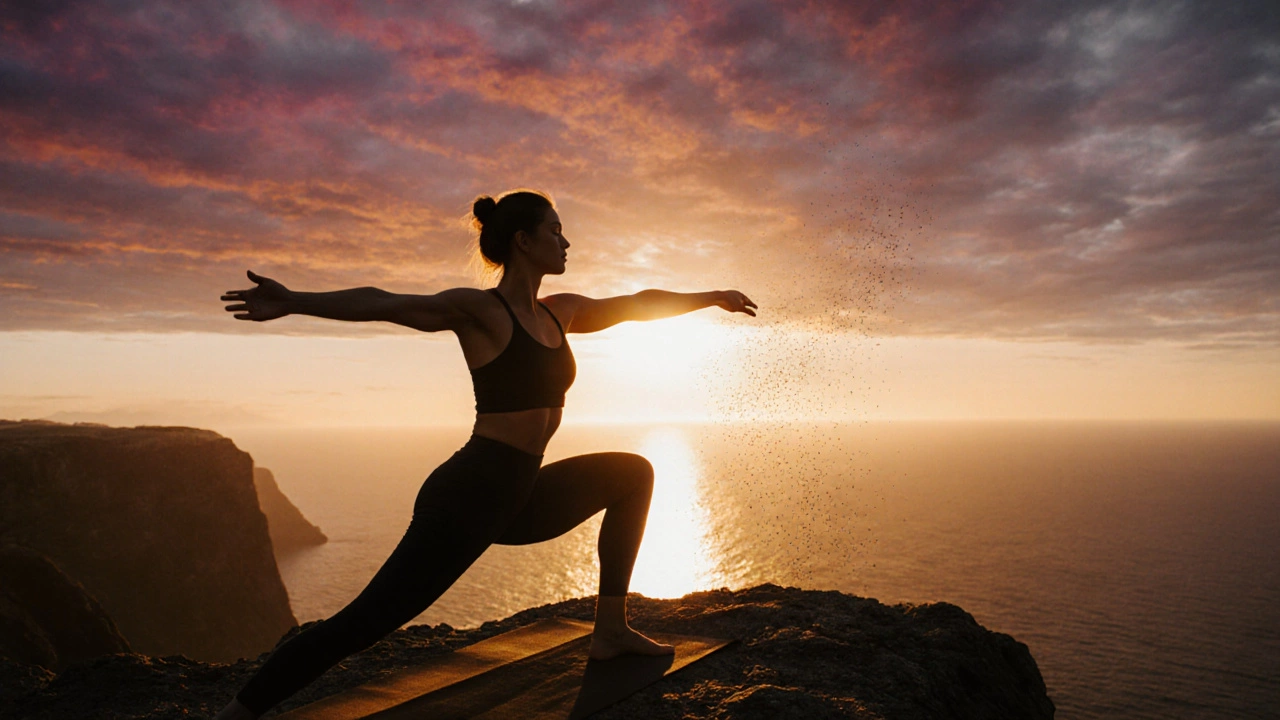How Quickly Yoga Transforms Your Body - Timeline & Results

Yoga Transformation Timeline Calculator
Your Practice Settings
Expected Transformations
Enter your practice details to see when you'll experience changes
When you hear the word Yoga is a mind‑body practice that blends movement, breath, and meditation to improve flexibility, strength, and overall wellbeing, you might wonder: will I see any difference in a week, a month, or does it take years?
Key Takeaways
- Visible flexibility gains appear within 2-4 weeks of regular practice.
- Muscular strength and endurance start improving after about 6 weeks.
- Body composition shifts (more lean mass, less fat) typically become measurable after 3-4 months.
- Stress reduction and better sleep can be felt within the first few sessions.
- Consistent, varied Yoga routines accelerate all these changes.
Why Speed Matters
Most people start a new routine hoping for quick results. While some benefits of Yoga pop up almost immediately-like a calmer mind after a short breathing session-physical changes depend on how often you roll out the mat, the style you choose, and how you support yourself with nutrition and rest.
Think of your body as a garden. If you water it a little every day, you’ll see shoots sprout faster than if you dump a bucket only once a month. The same principle applies to yoga: frequent, intentional practice fuels quicker adaptation.
What Happens in the First Two Weeks?
During the initial 7-14 days, the nervous system is the main player. Your brain learns to coordinate breath with movement, which can feel awkward at first. This period is often called the "neural adaptation" phase.
Typical signs:
- Improved balance in standing poses like Tree Pose.
- Reduced heart rate during gentle flows, indicating better vagal tone.
- Feeling calmer after a Pranayama (breathing) sequence.
These are mostly mental and neurological gains, not yet visible changes in muscle or fat.
Weeks 3-4: Flexibility Takes the Lead
By the third week, connective tissue starts responding to repeated stretching. You’ll notice that reaching for your toes becomes less painful, and poses like Forward Fold feel more natural.
Why does this happen? Collagen fibers realign, and the body produces more lubricating synovial fluid in joints. The result is a measurable increase in range of motion.
Tip: Keep a simple stretch log. Write down how far you can reach or how long you can hold a pose. Seeing numbers move gives motivation.

Weeks 5-6: Strength & Endurance Build Up
Now the muscles start earning their stripes. Styles like Vinyasa and Power Yoga involve flowing from one pose to another, demanding both static and dynamic strength.
Typical improvements:
- Holding a plank for 30-45 seconds without shaking.
- Executing a full Chaturanga (low push‑up) with proper alignment.
- More repetitions of core‑focused poses like Boat Pose.
Strength gains are supported by increased motor unit recruitment-the nervous system tells more muscle fibers to fire together.
Months 2-4: Body Composition Shifts
After you’ve built flexibility and strength, the next visible change is in body composition. While yoga isn’t a high‑calorie‑burn activity like HIIT, it still raises your resting metabolic rate (RMR) by preserving lean muscle mass.
Research from the Journal of Sports Science (2023) shows that participants who practiced a mixed Hatha‑Vinyasa routine three times a week reduced body fat by an average of 2.5% over 12 weeks.
Key drivers:
- Increased Metabolism from muscle maintenance.
- Better insulin sensitivity, thanks to regular movement.
- Reduced cortisol levels, which helps prevent fat storage around the abdomen.
Combine yoga with a balanced diet, and you’ll likely see your waistline shrink and your muscles become more defined.
Beyond Six Months: Long‑Term Adaptations
If you stay consistent for half a year or more, a few deeper changes happen:
- Bone density improves, especially with weight‑bearing poses like Warrior II and Chair Pose.
- Enhanced cardiovascular health-resting heart rate drops, and VO2 max rises modestly.
- Deepened mind‑body connection, leading to better stress management and even improved immune function.
These aren’t just cosmetic; they contribute to overall longevity and quality of life.
Timeline at a Glance
| Time Frame | Primary Change | How to Measure |
|---|---|---|
| 1-2 weeks | Neural adaptation (balance, calm) | Balance tests, heart‑rate variability |
| 3-4 weeks | Increased flexibility | Reach tests, pose depth recordings |
| 5-6 weeks | Strength & endurance gains | Plank hold time, Chaturanga repetitions |
| 2-4 months | Body composition shift | Body‑fat measurements, waist circumference |
| 6+ months | Bone density & cardiovascular health | DEXA scan, resting heart rate, VO2 max test |

Factors That Speed Up or Slow Down Change
Not everyone moves at the same pace. Here are the biggest influencers:
- Frequency: Practicing 5‑6 days a week accelerates all timelines compared to a once‑or‑twice‑a‑week schedule.
- Intensity: More vigorous styles (Power Yoga, Ashtanga) boost strength and metabolism faster.
- Age: Younger bodies recover and adapt quicker, but older practitioners still see gains-just at a gentler rate.
- Nutrition: Sufficient protein supports muscle repair; a balanced diet fuels recovery.
- Sleep: 7‑9 hours per night maximizes hormonal balance for growth and fat loss.
Common Pitfalls and How to Avoid Them
Even with the best intentions, many hit snags that stall progress.
- Skipping Warm‑up: Jumping straight into deep stretches can cause micro‑tears. Begin with a few Sun Salutations to warm muscles.
- Inconsistent Schedule: Random practice leads to plateaus. Set a realistic weekly plan and stick to it.
- Over‑relying on Rest Days: One rest day is fine, but more than three in a row diminishes adaptation.
- Neglecting Breath: Breath drives oxygen delivery. Practice Ujjayi Breathing during flows to boost endurance.
Putting It All Together: A Sample 8‑Week Plan
- Weeks 1-2: 20‑minute gentle Hatha sessions 3×/week. Focus on alignment, breath, and basic poses (Mountain, Downward Dog).
- Weeks 3-4: Add 10‑minute dynamic flow (Vinyasa) after each Hatha. Track reach in Forward Fold.
- Weeks 5-6: Introduce strength‑focused blocks: Plank series, Warrior flow, and short holds (30‑45 sec). Increase session length to 35 minutes.
- Weeks 7-8: Combine everything into a 45‑minute mixed class. Add a 5‑minute meditation for stress tracking.
Stick with the plan, log your metrics, and you’ll see noticeable changes by the end of the two months.
Bottom Line
If you’re wondering how fast yoga will change your body, the answer is: you’ll feel mental calm within days, flexibility in a few weeks, strength in a month‑plus, and visible body‑composition shifts after three to four months-provided you’re consistent.
Remember, yoga isn’t a quick‑fix gimmick. It’s a progressive system that rewards patience. Keep showing up, tune into your body, and the transformation will unfold at its own, rewarding pace.
How many days a week should I practice to see results?
Most people notice measurable changes when they practice at least three times a week. For faster flexibility and strength gains, aim for five‑six short sessions.
Can yoga help me lose weight?
Yoga alone isn’t a high‑calorie burn activity, but it builds lean muscle and improves metabolism. Combined with a balanced diet, it can support steady weight loss over months.
What’s the difference between Hatha and Vinyasa for body changes?
Hatha focuses on static holds and alignment, ideal for building flexibility and foundational strength. Vinyasa adds flow and cardio elements, boosting endurance and calorie burn.
Do I need special equipment for these results?
A good mat, a block, and a strap are enough for most routines. As you progress, you might add a yoga wheel or resistance bands, but they’re optional.
How can I track my progress objectively?
Keep a simple log: note pose depth, hold times, heart‑rate before/after sessions, and monthly waist measurements. Photographs every four weeks also help visualize changes.